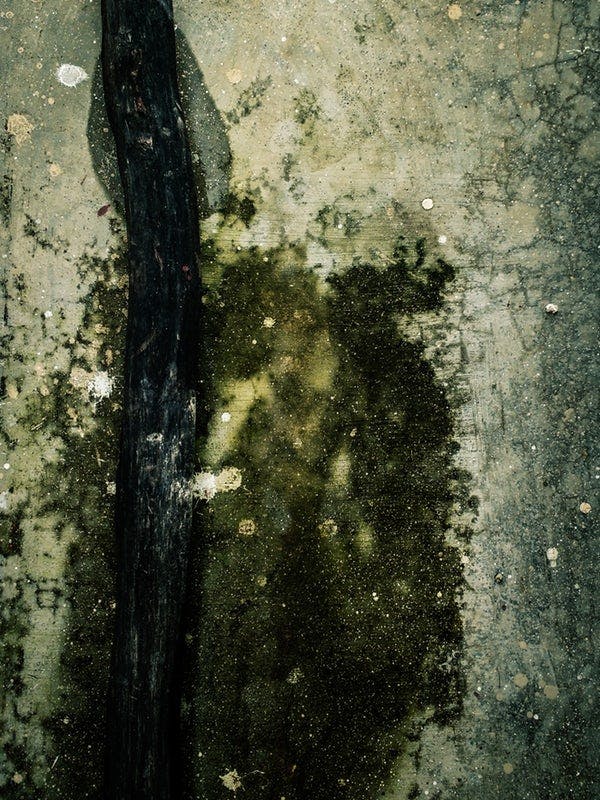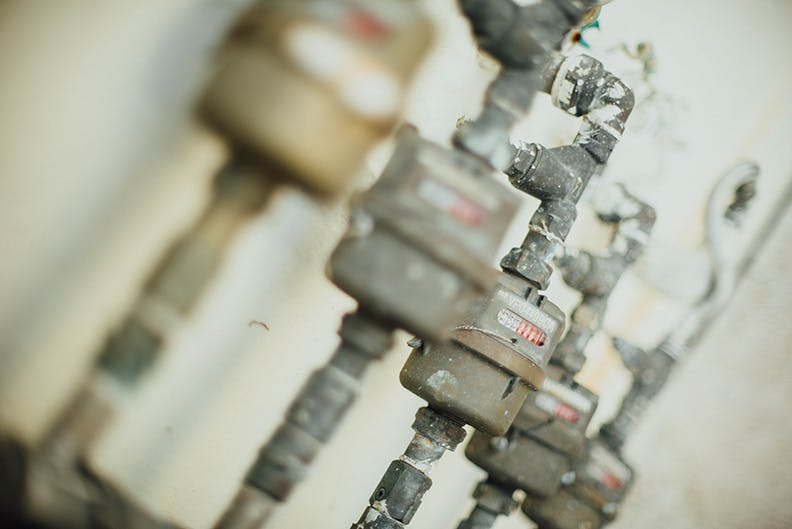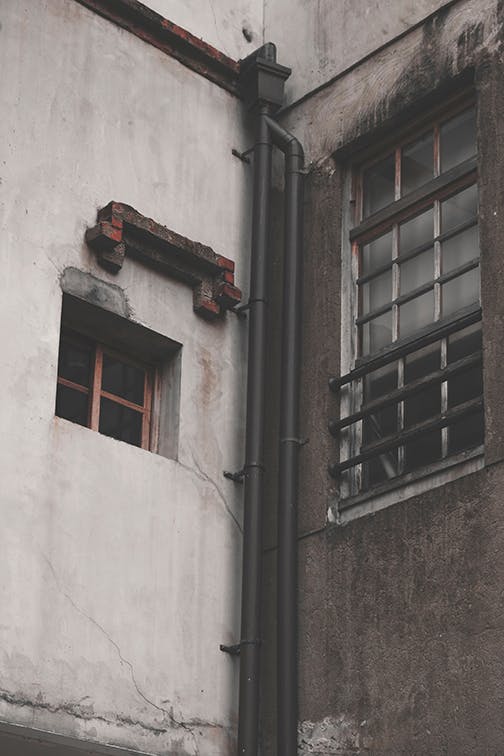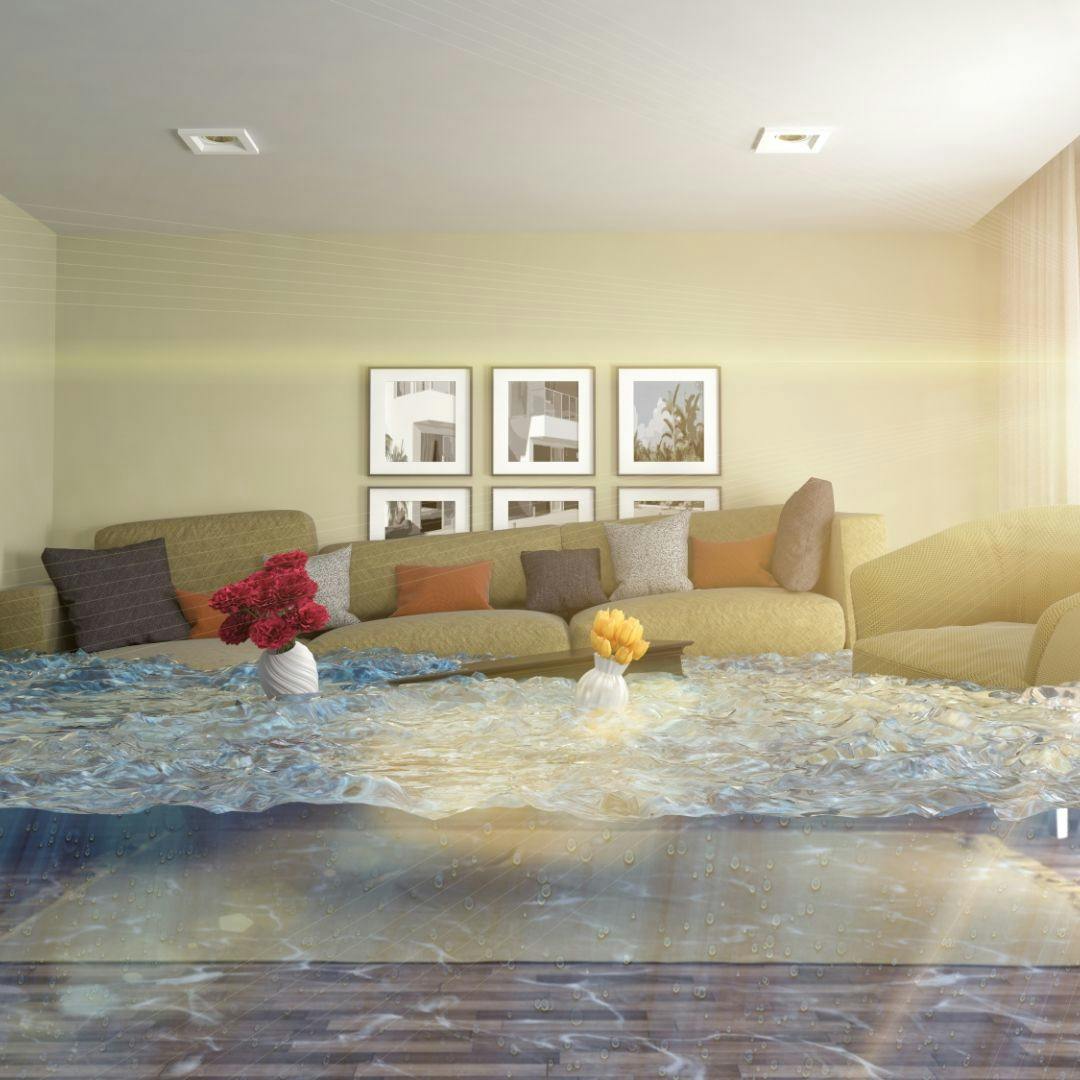
Despite the simplicity of the idea, clean and running water in your home is one of the greatest innovations for home and public use. It’s hard to imagine life without it. In fact, indoor water for toilets, sinks, and showers were invented and brought to the United States in 1815 (although building a public water supply line is an ancient idea).
It is easy to take our water usage for granted and think nothing of its function. But water and moisture inside of any building is dangerous if not kept in the pipes where it belongs. The median age of a home in the United States is 37 years. If you’re searching for a new home, you can imagine how important it is to inspect the pipes in your realty prospects. And if you own an older home, you probably don’t look forward to updating your home’s plumbing to modern standards. There’s a good reason for it, though: some investing now is worth it to avoid a whole lot of headache and heartache later. After all, buying a sump pump and waiting for a leak to spring is like buying a fire extinguisher in case of a forest fire!
Although maintenance of a home’s water system needs to happen at some point, there are varying degrees of expediency depending on the age of your home, as well as the types of damage you can expect from your climate. In warm and humid climates, mold can easily spread to walls where pipes begin to drip. In cold climates, the flow in your home’s pipes can freeze and break from the pressure. If you are not familiar, when water freezes to ice, it expands, which can lead to pipes bursting open. During a pipe burst, the flow behind the ice becomes the problem: water can spill into crevices between walls and into basements where thousands or even tens of thousands of dollars in damages can decimate your wallet, your home, and your health.
Water damage can sneak up on you and catch you completely off guard. Whether they cause immediate catastrophic damage or drop-by-drop, it is naturally difficult to keep track of the health of the pipes in your home. Without a plumber on hand at all times, you need a solution that will not only spot the leaks the moment they occur, but one that will seal the leak at the source when moisture is detected. A shutoff valve for your home or business’s water is a tool perfect for the job, along with a variety of other wireless water sensing devices meant to keep water right where it is meant to be.

The Terror of Home Water Disasters
If you live north, perhaps you expect frozen and broken pipes. Climates of constant rain can threaten any unprepared home. But even if you live in Arizona or Nevada, don’t assume you’re safe, when it comes to flood damage in your home: insurance claims for flood damage occurs for 1 in 50 homes in the United States annually, all across the country. If you don’t have flood insurance, you should immediately consider it; the damage water can do to your home can have unexpected consequences and costs.
A Tiny Unseen Leak, Even In New Construction
For one man in Las Vegas, water damage not only destroyed the brand-new renovation of his home, it also went undetected for months. As reported by Yahoo Finance, the unnoticed drip-by-drip flood damage stemmed from a 90° bidet connection that had burst. It wasn’t until a neighbor saw water leaking from the home and alerted the owner to the problem.
This story illustrates the disaster potential in all water systems:
- Uncontrolled water flow, especially small ones, can go undetected for a long time, spreading damage through walls and under carpet.
- Without insurance, the cost amount in this case was in the tens of thousands.
- This kind of disaster is a complete surprise. During renovations, the last thing you expect is the kind of effect a single faulty pipe can have.

Secondary Effects of Floods: Flooding in Older Homes
Another story reported by The Balance sheds light on unforseen secondary effects of flood damage. A Canadian family moved into an old home in 1970. In 2018, Susan Nicholsen, a daughter of the owners, discovered an upstairs bathroom flooded with water; a single plastic connector had sprung a leak and had gone unnoticed for some time. The water did not remain in the bathroom, however. It flooded from the second floor all the way to the basement through the vents, spilling into nearly every room downstairs.
But that was only the beginning of their troubles. When they called a company to come fix the damage, the clean-up crew performed a routine checkup of the old house in addition to the inspection of the overall damage and discovered asbestos in the drywall. And not a normal amount, either: the home was rated as the highest asbestos contamination possible in a home built before 1990. Not only did the home have to undergo restoration from the damage, it also had to be renovated to eliminate any asbestos contamination. Luckily for Nicholsen, insurance covered everything.
Some important points from this tale:
- Flood damage from even a single small source can severely damage a home.
- Flood damage can reveal additional flaws in the home that restoration specialists will discover, adding additional time to the disaster clean-up and repair.
- Depending on the quality of your flood insurance, they can cover everything from the disaster restoration crew, the renovations of the home, and the clean up of any additional faults in the home. If you already have flood insurance, it is an excellent idea to review what exactly it covers.

A Flood Like No Other: Water Pipe Bursts
If your home is built in a region known for freezing temperatures, you learn fast to keep your pipes free of ice lest they burst from the pressure. But even if you live somewhere warm, any change in pressure from your city’s water can cause issues in your own home. Even nearby construction can make your home pipes burst! A pipe burst is sometimes much more dramatic than the typical dripping drain and can cause a great amount of damage before the water can be shut off. Or, worse, such a flood could prevent you from accessing your home water valve turn-off at all, since most valves are connected to the same basements your flood water wants to get to so desperately.
A student at Texas Christian University caught cellphone footage of a broken water valve in his dormitory on campus, as reported by local NBC news. The surprising video illustrates what typically happens when a pipe breaks. The first thing you will probably hear is the sound of rushing water. It may sound as quiet as a toilet flushing or as loud as rain on a roof. Depending on the floor of your home or apartment, the water flow may seep into your carpet and across your floor, or it may begin to “rain” through your ceiling.
There are two solutions in this case, apart from having an expert in your immediate family that has a quick solution: first, find that water shutoff fast, or two, call a disaster recovery crew. If you do find your water shutoff, you may want to turn off your electricity as well so nothing shorts and so that no one gets electrocuted.
Remember these facts about burst pipes:
- They can happen anywhere and very quickly.
- The best defense against a pipe burst is preparation. Know where your shut-off is and know your plumber’s emergency number or hours of service (especially if they do or do not have emergency services).
- If you think the pipes in your home are old and corroded, consider getting them inspected and replaced. Pipes burst more frequently if they are degraded.

A Disaster On Top Of A Disaster: Earthquakes and Broken Water Mains
For someone living near a fault line, there’s no doubt they recognize the danger. In fact, they’ve probably felt the ground quake, large or small. When you and your family endures the horror of a major earthquake, the last thing you are thinking of is protecting your home from rapid flood damage. Unfortunately, this is a major and common problem. If your home were to suffer fire damage from a ruptured gas main, the water used to extinguish the fire would damage what remained of the home regardless.
According to research performed by the University of Colorado, major pipelines were more likely to break rather than leak during an earthquake. Aftershocks can cause additional damage to urban and rural systems. Most systems, however, will still continue to pump water at lower pressures, with the addition of contaminants that make the water usage undrinkable (with repairs taking several hours on each water supply line rupture). If your water main is active during the effects of an earthquake, not only will your home suffer from the effects of the earthquake, flood damage can become an immediate health hazard because of mold and bacteria.
Important points about flood damage during an earthquake include:
- Earthquake insurance does not cover flood damage.
- An active water valve in your home can still have water pressure even when your hometown’s water infrastructure is damaged.
- Water damage becomes secondary to the earthquake damage, and can potentially cause even more harm to your home and personal belongings than the quake itself.
Whether a small water flow or major pipe bursts, damage from water can have long-lasting and devastating effects on your home, your belongings, and your personal health. The ultimate question is how to prevent such disasters in the first place and ensure water stays where it should. The answer comes from devices that monitor your pipes at all times and shut off your home’s main water valve the moment it senses even the smallest leak.

What Is a Solution for Preventing a Water Hazard Disaster?
Earthquakes are obviously hard to predict, sure. And tiny undetectable leaks sound like a homeowner’s inescapable nightmare. Though it may sound as if all types of flooding and leaking in your home or property are unavoidable, there are steps you can take and tools you can utilize to lessen the chances of serious damage. You can always call an inspector to perform a leak detection. In addition to this, since we want to prepare you for emergencies at any time, day or night, we recommend making sure you have an automatic water shutoff valve.
The tool we want to share in detail is simple in function but modern in design: an automatic water shutoff valve. With the maze of pipes in the walls of your home, it may sound improbable that a single valve could prevent all the damage a flood could accomplish. But when we talk about a water shutoff device, we are talking about an entire system of detectors and sensors that monitor the length of your home’s plumbing system and stop your home’s water usage at its source before a leak or break can happen at all. The right sensor in the right place can make all the difference, and securing your main water line is vital in fending off disaster.
The Latest Leak Detection Systems and Wireless Hubs
An automatic water shut off valve is not alone in its job. The dependability of your home’s water valve and piping depends upon a whole detection system that will tell it to turn off the waterworks should puddles start to form in specific places in your home or business.
The valve itself is just that: either a fixture connected directly to your main water valve or a straight pipe connector, each with a 180° valve that seals tight. Connected to the valve is a digital receiver that awaits input from the detectors placed around your home. These detectors come in many shapes and sizes and plug in like any other appliance; a detector device should be placed in a location where flooding or freezing is most likely to occur. Beneath your washing machine or bathroom sink, toilets both upstairs and down, and beneath your water heater and inside near the emergence of outside water fixtures. These detectors measure for any water that drips or pools around them and alert the shut off valve to seal off water access to the home. Some detectors can also measure whether hot water or cold water is being detected to help you or a plumbing specialist identify the type of leak.
Truthfully, you can affix multiple shutoff valves in your home if you don’t want your entire water system to cease function in case of emergencies. In case of a complicated system with multiple valves and detectors, it is wise to install a wireless water detection central hub that can become the control station. These hubs typically come with an app you can access on any smart phone to alert you wherever you are about any leaks and valve sealings, warning you automatically when disasters are averted. If you have multiple detectors, the hub can specify which ones were tripped, giving you a clearer idea of the trouble spot. Below is a video demonstrating how an automatic water shut off valve works.
The Perfect Supplemental System
Even if you can’t afford a full water and freeze detection system, that doesn’t mean that protection is beyond your reach. One of the simplest and affordable options you have are water leak and freeze detecting sensors from Cove Security. With help from a central hub, these water detection devices work by very simply alerting a central hub whenever it detects moisture. If you are home, the panel also features an 84 decibel alarm (about the volume of a running lawn mower) to immediately warn you that a water sensor has been activated. The touch panel can be configured for multiple sensors, and with its great wireless range, you will be able to reach every corner of the average American home.
Such hubs also depend on a battery in case of power outage (such as might happen during an earthquake, a construction accident, or other local disaster). You will never have to worry about your system failing at the worst possible moment. Depending on your insurance company, installing such a simple system can even save you money on your monthly homeowners insurance bill. Automatic water detection and freeze detection has its perks!
Ease and Difficulty of Water Shut-Off System Installation
The difficulty of water protection installation depends on how accurate and secure you prefer your protection to be. The right DIY solution is to place detectors around the trouble spots of your home. For example, Cove features the perfect water leak detectors for your home. Each water sensor should be placed in a location where water may leak, such as beneath washing machines, under refrigerators, at the base of water heaters, and behind toilets.
While Cove technology cannot be integrated into the pipes of your home, systems specified as DIY flood protection alarms are fairly simple to install and inexpensive. Purchasing and installing a water shutoff valve (or several) may require a bit more assistance from a professional. With a hub device connecting your valve and your detectors, installation and integration is also fairly simple, especially with said professional’s help.
If you own a large residence or business and prefer not to fully automate your flood protection on your own, you can choose to go with a 24/7 monitoring company that can come in, perform a full inspection of your property, and install their devices and central hubs where necessary. This is the most expensive option, but it may also be the most efficient and effective. You may wish to discuss with a third-party plumbing expert (probably not a flood protection sales representative) on the best course of action. Such an expert has most likely seen every system under the sun and can judge which type you require.

24/7 Flood Protection Monitoring Companies: Tried and True Water Protection
Installing a leak sensor and valve may seem intimidating, especially if they are DIY projects; you may not feel fully protected if you become unsure about your system’s installation. If you decide to proceed with a company to help monitor your home or business for flood damage, here are two companies that specialize in flood monitoring you might consider.
The first is Water Hero. Available on WaterHeroInc.com is a full system of flood sensors and valves to protect even the largest buildings. Whether residential, commercial, or highrise, they can easily install an emergency shut-off valve where each is needed. If DIY projects still interest you for smaller residences, they offer the Water Hero P-100 system.
This system includes:
- A main controller hub for processing water sensor information
- A water sensor pipe attachment for accurate pressure monitoring
- A stainless steel shut off valve and power cables for quick activation
- A quick start and installation manual with full steps
The second company known for their quality flood protection products is WaterCop. Available for both residential and commercial buildings, WaterCop leak detection system and shut off valves come in a variety of packages, including their classic valve and leak detector.
The WaterCop system comes available in a few types:
- Regular designs that resemble their classic system, with a central hub in addition to their valves and sensors
- Outdoor hardware for exterior water line fixtures
- Large commercial components made to keep large buildings secure
- Dual valve component made for commercial buildings with multiple water sources

If the Worst Happens: Clean-Up and Restoration
Let’s say you’ve done absolutely everything you can to make your property secure from water damage and flood. You’ve installed the valves to your water shut off valve, you have water detectors in all the right places, and you have an app on your smartphone with minute-by-minute updates of the precise pressure of every water pipe in your building. But then let’s say you go on vacation, or a business trip, or some other event that takes you away from your home. Then the worst happens: you get an alert that your water has shut off, but water continues to trip the water detectors elsewhere in your basement.
Anxiety fills your mind for every moment you’re away from home, and you see the true reality of the situation the moment you race downstairs: the floor of your basement, from the carpet, past the moulding, to the foot of your couch, is wading in five inches of water. Maybe the valve was improperly installed. Perhaps the main itself was corroded and burst. It could have been outside your control entirely, a tree root finally making its way through an exterior pipe (with your front lawn having just as much flooding as your basement).
With all your precautions, a situation like this is unlikely but if the worst case flooding situation occurs, here are some steps you can personally take to help you avoid as much cost and damage as possible. Remember, that you also have your family or your customer’s health to consider, as flood damage can make mold grow and multiply. In case you are unaware, mold is a dangerous fungal spore that can have a nasty variety of negative effects:
- Respiratory problems
- Increased danger to those with asthma or allergies
- Studies from the CDC suggest that long-term exposure can lead to asthma in children

Advice From the Experts
Concrobium, a company built to help homes recover from mold infestation, gives a few suggestions on what you can do before and after you call a disaster clean-up crew.
- Disconnect your power, if at all possible. The effects of electricity and water combined should present an obvious danger. With that said, never ever touch your power box or fuses while standing in water or while wet, and don’t step in water if it rises above the line of electrical sockets! If you think yourself in danger of electrocution, wait until professionals or the city can disconnect your power and begin clean-up.
- Turn off your home’s water shut off valve, if it hasn’t been already. If your flood damage is coming from another source, try to stem the water flow if possible.
- When things are safe from electricity, unplug and remove all electronic devices and begin the process of removing furniture and belongings from the flooded area. Speaking from personal experience, this can be a very emotional time. But the faster you can evacuate your belongings, the more of your belongings you might be able to salvage. Getting assistance from friends, family, and neighbors can help with the physical and emotional weight of the situation. Connecting fans to nearby power sources (not near water) with extension cords (perhaps from a neighbor’s home) can help in drying out fabrics and paper.
- Once the source of the water has been stopped and belongings are on their way to dryer places, try to reduce the amount of water in the area. Resist pulling out a wet-dry vacuum, however, as you never know if your electrical sockets are functioning properly. Never use extension cords since even a small nick in your cords can electrify the water and cause electrocutions. Instead, break out the towels and focus on carpeting first.
- Once an area has been sufficiently dried, break out the disinfecting wipes and sprays to prevent harmful bacteria from settling on walls and floors. This is especially important if the flooding came from broken toilet pipes or public water mains. Disinfecting drying belongings is also a good idea.
- Once you have done all you can, consider calling your local water damage restoration company to perform a full inspection and clean-up of your home or business. The cost of hiring professionals will be much less than performing restorations yourself, especially if you have no flood insurance.

Absolute Necessities for Protection from Leaks and Floods
The busyness and day-to-day normalcy of life can put us into a state of complacency when it comes to the safety and protection of our homes and property. You never think water can do much to your home until it does. You never think an inch of water could cost as much as it does when you find it flooding your basement, your wash room, or your kitchen. You never think your home is in danger of water, especially if you live nowhere near a lake, reservoir, or the ocean. Then, sometimes even in just a few moments, the damage is done and you’ll now have to pay tens of thousands of dollars for disaster clean-up and necessary home renovations. If this happens, you’ll likely wish you had attempted to prepare in advance.
Get flood insurance, even if you think you don’t need it. Like earthquake insurance, it is cheaper than you think. Arm your home with the proper tools and hardware. And, most importantly, learn as much as you can about the right steps to avoid or fix any situation that may arise. Do research on your local specialists and get informed of their pricing and emergency phone numbers. A little preparation and planning can go a very long way to avoiding the heartache that can come from an indoor flood.
